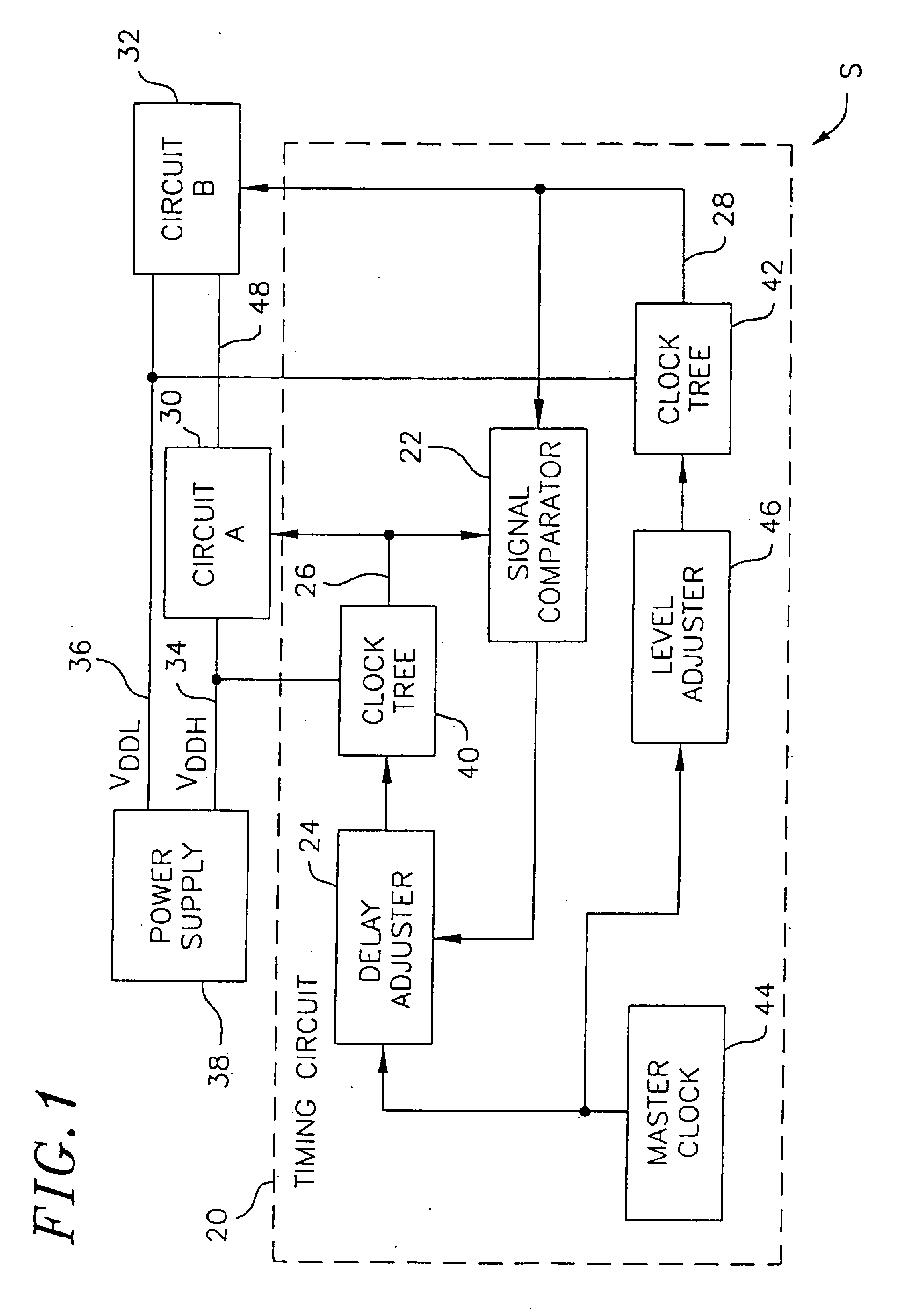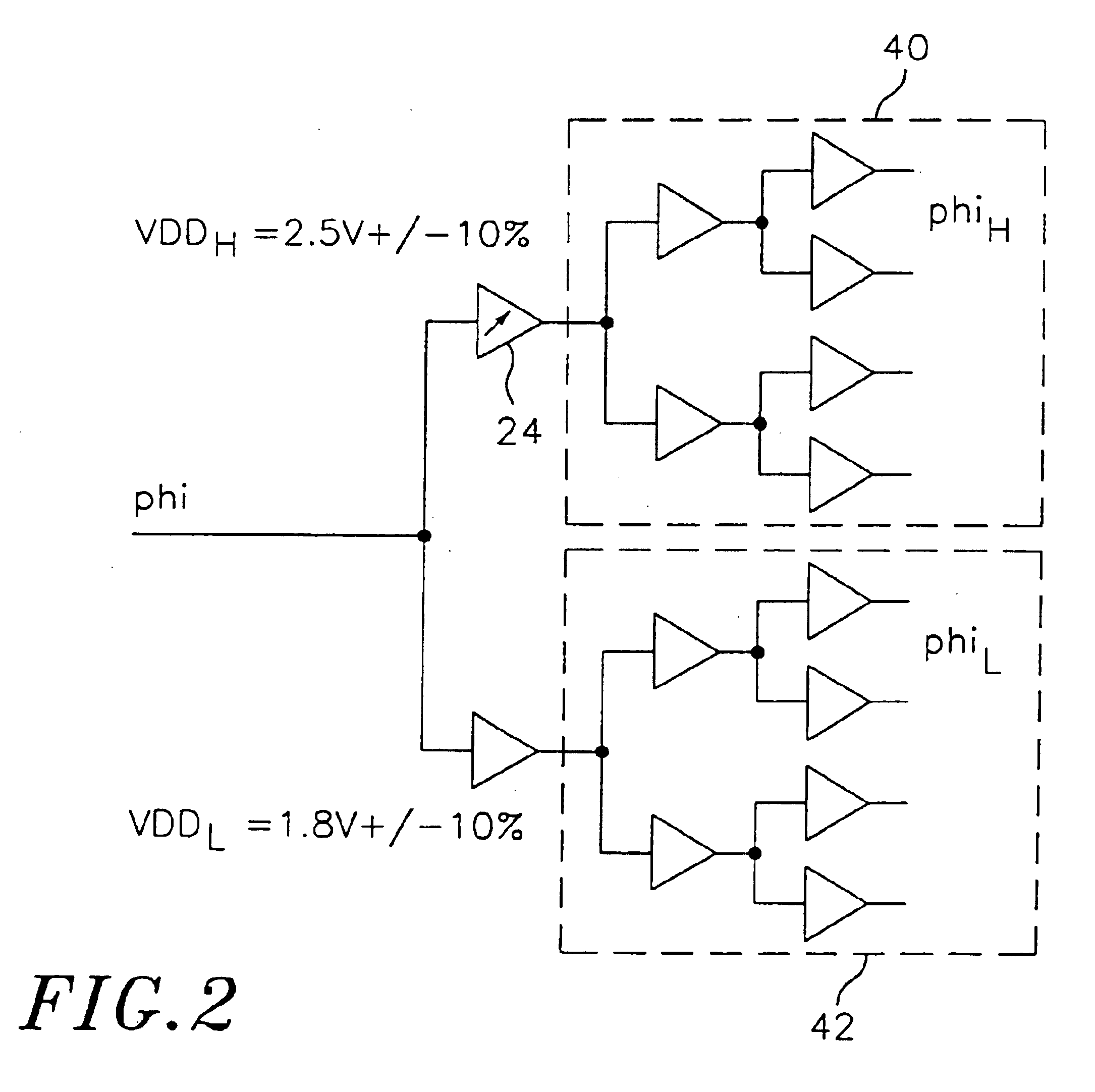System and method for compensating for supply voltage induced clock delay mismatches
a supply voltage and clock delay technology, applied in the field of electronic circuits, can solve the problems of consuming more power than a comparable circuit, and requiring a trade-off between the speed at which a circuit operates and the power it consumes, so as to reduce the delay mismatch
- Summary
- Abstract
- Description
- Claims
- Application Information
AI Technical Summary
Benefits of technology
Problems solved by technology
Method used
Image
Examples
Embodiment Construction
The invention is described below, with reference to detailed illustrative embodiments. It will be apparent that the invention can be embodied in a wide variety of forms, some of which may be quite different from those of the disclosed embodiments. Consequently, the specific structural and functional details disclosed herein are merely representative and do not limit the scope of the invention.
FIG. 1 is a block diagram of one embodiment of a system utilizing clock delay compensation in accordance with the present invention. Specifically, the system S incorporates a timing circuit 20 that includes a signal comparator 22 and a delay adjust circuit 24 for maintaining phase synchronization between clocks 26 and 28 that drive circuit A 30 and circuit B 32, respectively.
The system of FIG. 1 typically is implemented in an integrated circuit where multiple supply voltages are used to reduce the power dissipation of the integrated circuit. In this case, less timing-critical parts operate on a...
PUM
 Login to View More
Login to View More Abstract
Description
Claims
Application Information
 Login to View More
Login to View More - R&D
- Intellectual Property
- Life Sciences
- Materials
- Tech Scout
- Unparalleled Data Quality
- Higher Quality Content
- 60% Fewer Hallucinations
Browse by: Latest US Patents, China's latest patents, Technical Efficacy Thesaurus, Application Domain, Technology Topic, Popular Technical Reports.
© 2025 PatSnap. All rights reserved.Legal|Privacy policy|Modern Slavery Act Transparency Statement|Sitemap|About US| Contact US: help@patsnap.com



